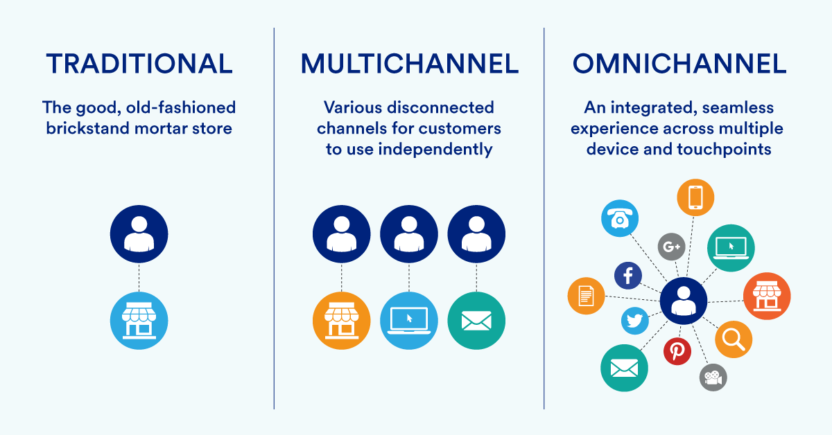
In the fast-changing digital environment of today, companies need to adjust their marketing approaches to connect with their audience successfully. Understanding the distinctions between traditional, multichannel, and omnichannel marketing is crucial for optimizing engagement and driving conversions. This article explores these three approaches, incorporating key elements such as social media marketing, SEO, website development, search engine optimization, and software development.
Traditional Marketing
Traditional marketing encompasses the time-honored strategies and techniques that have been employed for many years. This includes print ads, television commercials, radio spots, and direct mail. These SEO strategies often focus on a one-way communication model where brands push their message out to consumers without immediate interaction.
Key Features:
One-Way Communication: Brands deliver messages to consumers without feedback loops.
Limited Targeting: Often targets broad demographics rather than specific segments.
High Costs: Expenses can be substantial, particularly for television and print media.
Challenges: Difficulty in measuring ROI effectively.
Limited interaction with the audience, can lead to less engagement.
Multichannel Marketing
Multichannel marketing expands upon traditional methods by utilizing multiple channels to reach customers, including online and offline platforms. This could involve a combination of social media marketing, email campaigns, websites, and physical stores.
Key Features:
Multiple Touchpoints: Brands engage with consumers through various channels, providing more opportunities for interaction.
Channel-Specific Strategies: Each channel may have tailored content suited to its audience and format.
Challenges: Integration challenges may occur, resulting in disjointed customer experiences.
It requires consistent messaging across all channels, which can be challenging to maintain.
Omnichannel Marketing
Omnichannel marketing takes multichannel marketing a step further by creating a seamless and integrated customer experience across all touchpoints. This strategy recognizes that consumers interact with brands through various channels and aims to provide a cohesive journey.
Key Features:
Seamless Integration: All channels work together, allowing for a fluid transition between them. For instance, a customer might see a social media ad, visit the website for more information, and make a purchase in-store.
Customer-Centric Approach: Focuses on understanding the customer journey and delivering personalized experiences based on their interactions across channels.
Challenges: Requires robust data management and analytics to track customer behavior.
Implementation can be complex and may require significant investment in technology and training.
The Role of Digital Strategies
In the context of today’s digital marketing environment, the importance of social media marketing, SEO, and website development cannot be overstated.
Social Media Marketing: This has become a vital channel for all three marketing strategies. It allows for real-time engagement with consumers and can be effectively integrated into multichannel and omnichannel approaches.
An SEO specialist can enhance your website to boost its visibility and attract organic traffic. SEO is essential for all marketing strategies, as it enhances the online presence necessary for attracting potential customers.
Website Development: A well-developed website is crucial for both multichannel and omnichannel strategies, serving as the central hub for customer interactions. Skilled website development significantly boosts user experience, simplifying navigation and encouraging customer interaction.
Software Development: Custom software solutions can improve the integration of various marketing channels, allowing businesses to manage customer interactions more efficiently and analyze data to refine their marketing strategies.
Conclusion
In summary, the differences between traditional, multichannel, and omnichannel marketing lie in the complexity and integration of customer interactions. While traditional marketing relies on one-way communication, multichannel marketing expands the number of touchpoints, and omnichannel marketing focuses on creating a seamless customer experience across all channels. Incorporating digital strategies such as social media marketing, SEO, website development, and software development is essential for modern businesses looking to thrive in a competitive landscape. Understanding these concepts will enable marketers to make informed decisions that drive engagement and conversions effectively.







